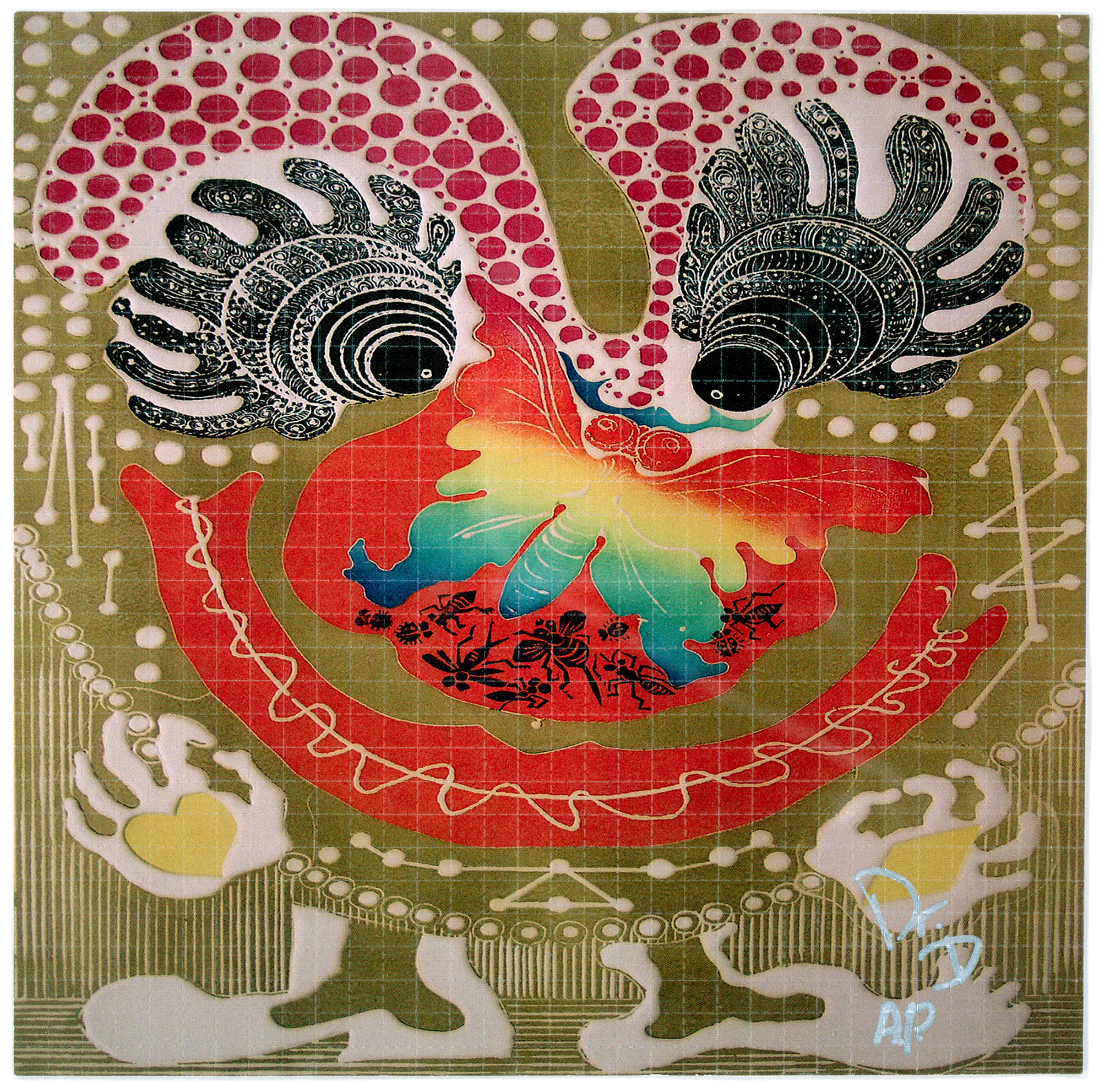 Purple Jesus. Beavis and Butt-Head. A Pegasus flying through the night sky. You would be hard-pressed to find a common denominator between the three, but the answer lies in San Francisco, California. All of those transcending images are on display as blotter art at Mark McCloud’s “Blotter Barn”, an expansive collection of artworks printed on to LSD laced blotter paper. You would also be correct in assuming that this would making every single one of McCloud’s pieces of work illegal according to the DEA, which classifies lysergic acid diethylamide (LSD) as a Schedule 1 drug, which is why he has had to legally defend his collection of multiple occasions. LSD laced blotter art has won over the hearts, and certainly the minds of collectors all over the world and its popularity has even spilled over into the mass consumer market with unlaced blotter art widely available for sale on the internet.
Purple Jesus. Beavis and Butt-Head. A Pegasus flying through the night sky. You would be hard-pressed to find a common denominator between the three, but the answer lies in San Francisco, California. All of those transcending images are on display as blotter art at Mark McCloud’s “Blotter Barn”, an expansive collection of artworks printed on to LSD laced blotter paper. You would also be correct in assuming that this would making every single one of McCloud’s pieces of work illegal according to the DEA, which classifies lysergic acid diethylamide (LSD) as a Schedule 1 drug, which is why he has had to legally defend his collection of multiple occasions. LSD laced blotter art has won over the hearts, and certainly the minds of collectors all over the world and its popularity has even spilled over into the mass consumer market with unlaced blotter art widely available for sale on the internet.
LSD popularity skyrocketed in the 1960s, influencing art and music with one the most prominent hotspot being San Francisco. The psychedelic rock and art movement began, creating an entire culture of its own and as it grew in popularity, as did the use of LSD. Usage in concert goers and those attending art exhibits became quite common, as it was a simple as popping a pill or even consuming a sugar cube or animals crackers with liquid LSD dropped on it because at that time, the substance was legal. Unsurprisingly, the U.S. government was also interested in the substance during the same time period as the CIA used LSD in their “mind control program” known as MK-Ultra and experimented with its capabilities as a weapon of war. In 1966, California made LSD illegal and the United States of America banned the substances federally shortly after, making it punishable by law to use or sell based on the weight in the possession of the individual. This made it so that an animal cracker or sugar cube that weigh one gram with a single hit of acid would get you the same amount of time as one gram of pure crystal LSD.
Naturally, psychedelic culture and its drug dealers had a creative solution for this problem leading to the creation of blotter art. Instead of carrying around a couple of grams of sugar cubes with LSD on them which would get you locked up for quite some time, dealers began to drip LSD onto blotter paper, making the substance extremely lightweight and easier to distribute. Like in any other business, branding is important, so drug dealers began to create logos, designs, and art to print onto their blotter paper and buyers began to take a likeness to this form of art. Everything from full sheets of perforated blotter paper to just the individual hits became blank canvasses to create an identity and leave a mark.
Now, Mark McCloud’s “Institute of Illegal Images” has accumulated some of the most intriguing examples of blotter art in his collection which is certainly the largest known collection in the world. McCloud has tens of thousands of sheets of LSD infused blotter on display all over the walls at his home in San Francisco. Everything from an Aardvark to Wizard Mickey Mouse to colorful Timothy Leary can be found in his advanced collection, some of which can be found on his website. The collection is private, but McCloud has allowed visitors by appointment and the collection is well documented by the media.
Considering the DEA stance on LSD and its legality, McCloud’s collection is always at risk, but it has gained notoriety as a proper art collection. Blotter art itself has become a hallmark for one of the most interesting periods in American history, full of experimenting, uncertainty, and transformation. An entire culture was created surrounding LSD and the unique designs on each piece of blotter paper demonstrate it incredibly.






